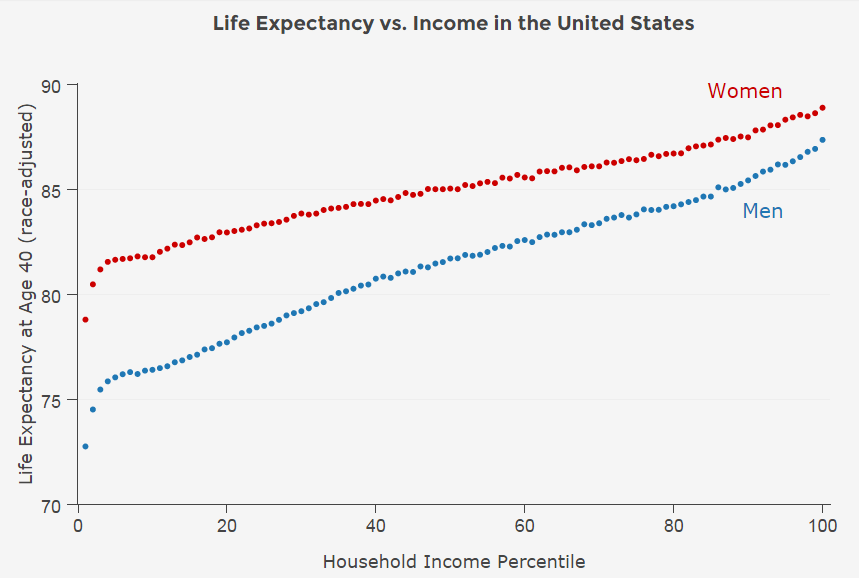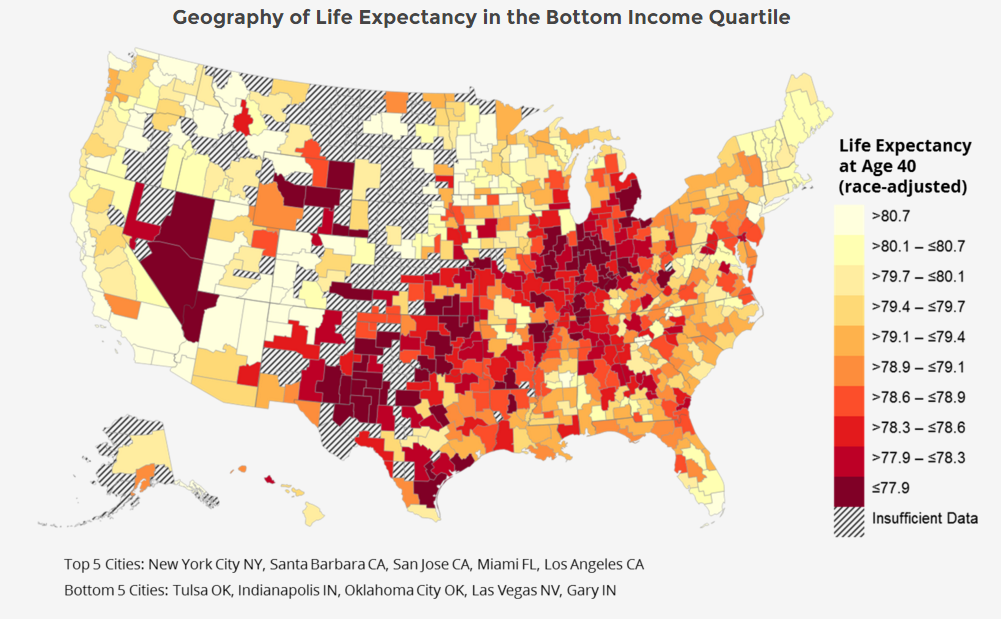
For several decades, data has shown a trend toward the concentration of poverty and increasing income inequality in major cities across America. Take New York City for example, a metropolitan area often cited to demonstrate some of the highest gaps in income between wealthy and poor residents in the country. As the wealth gap has continued to grow over time, a distinct correlation between income level and life expectancy has emerged, with higher incomes found to be associated with longer life spans.
Some striking analysis from The Health Inequality Project provides new details on the impact of income inequality on life expectancy. The report found that the difference in life spans between wealthy and poor individuals has rapidly increased from 2001 to 2014. Overall, the wealthiest Americans have experienced about three additional years in life expectancy since 2000, while the poorest Americans have made no substantial gains. On average, men with incomes in the top one percent were also found to live 15 years longer than men with incomes in the lowest one percent. The corresponding life expectancy gap for women is about 10 years.

While the study focused on life expectancy differences based on income rather than race, the disproportionate representation of communities of color in the lowest income cohort gives these findings great significance with respect to racial justice. Income inequality has worsened particularly along racial and ethnic lines where wealth disparities have widened to levels comparable to the Great Depression. In 2013, for example, the average wealth of white households was 13 times higher than that of black households.
Fortunately, the news is not all bad. As explored further in a recent article published in The New York Times, the effect of geography can be a significant mitigating factor when determining life expectancy in the United States, particularly for the poor. For people in the lowest five percent income bracket, life spans varied substantially depending on where they lived. While some parts of the country, including regions within Michigan and Kentucky, continue to show declining life expectancies, in cities like New York, San Francisco and Birmingham, the poorest Americans are actually living longer. For comparison, New York City’s poorest residents are expected to live about six years longer than the poorest residents in Detroit. On the opposite end of the spectrum, the difference in life span when comparing the wealthiest people in these two cities was less than one year.

Lower gaps in life expectancy were found in cities with higher local government spending on social services, higher concentrations of college graduates, and lower incidences of obesity and smoking. These finding suggests that a variety of state and local initiatives to improve health can at least partially offset the effects of low income on life expectancy. The narrowing gaps in life expectancy – despite increasing income inequality – in cities like New York and San Francisco suggest a need for refocused efforts that go beyond access to medical care to also promote health more generally by addressing a wide range of social determinants.
In many ways, health equity is an exercise of distributive justice, where new or existing resources are allocated to help underserved populations achieve the best health outcomes possible, which is why Community Catalyst’s Center for Consumer Engagement in Health Innovation looks broadly towards wide scale system reform in efforts to reduce health disparities in its work on health system transformation.
